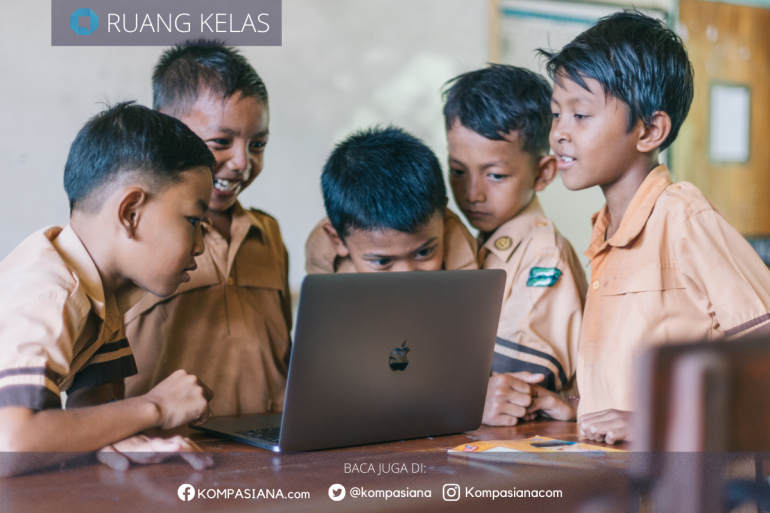ABSTRACT
This journal was created to raise students' awareness to reduce the amount of food waste within the school canteen. This journal is focused on finding effective ways to find answers to the problem of food waste in school canteens so far. On practical measures taken in school that implement Adiwiyata's Program in cafeteria to minimize food wastage and promote sustainable practices.
INTRODUCTIONS
Food waste is a problem caused by food packaging or the food itself. It is still an important issue for schools to think of ways to reduce the amount of food waste that comes from the school canteen or snacks from outside the school. Various things have been done to prevent the accumulation of food waste such as the 3R method which has been carried out in many schools in Indonesia, especially those participating in the Adiwiyata program. In this case, as a writer, I have experience in preventing food waste within the school scope because I used to go to a school that implemented the Adiwiyata program. According to my observations, this program helps to reduce the impact of food waste in school canteens and to increase students' awareness to reduce the amount of waste in schools.
LITERATURE REVIEW
The issue of food waste has become a political priority in many developed countries (van Herpen et al., 2019). Statistics show that a total of 68,000 tonnes is generated by primary schools in England and 28,000 tonnes by secondary schools, giving a total food waste weight of 96,000 tonnes annually (WRAP, 2020). Existing literature attributes the cause of food waste in schools to broad categories defined as: food-related (palatability and accessibility); child-related (taste preferences and satiation) and programme-related (duration, food service policies and coordination) (Blondin et al., 2015). Many interventions were offered to address food waste in school, including: food education (teaching children about food nutrition and waste), food-related interventions (improving food palatability and presentation), canteen interventions (measuring and readjusting portion size or weight) and programme-related interventions (giving more time to lunch, scheduling recess before lunch). However, children's voice is often dismissed from the discussions (Reynolds, 2018).
METHOD
This observation was done by comparing schools that implemented the Adiwiyata system and those that did not. Visibly, schools that implement the Adiwiyata system in the canteen show a slightly significant difference, which is seen from the excessive amount of waste either from food wrappers or leftovers from the food itself. Apart from comparisons and observations, Writers also asked about the effectiveness of this program with school canteen managers who were slightly helped by the waste problem at school. The students can also use reusable food boxes for the long term.
Here is an example of implementation for students to reduce food waste in the school canteen :
1. Food and drinks without plastic packaging: Customize by choosing packaged foods and beverages in the canteen, such as traditional foods or snack foods, and using glasses or cups for drinking.
2. Using reusable food boxes: Choosing washable and reusable food boxes, such as those provided by the canteen.
3. Reducing the use of plastic: Avoid using plastics such as choppers, cans, or Styrofoam packaging.
4. Using food wraps: Adapt to using plastic food wrappers to store food and food waste.
5. Waste pickup: Customize by depositing plastic and paper waste with waste pickers or waste banks.
6. Composting: Process organic waste, such as food and vegetable scraps, into compost.
Challenges
Here are some of the challenges that students will face in reducing food waste in the school canteen:
1. Plastic waste: People use a lot of cups and cans, which become non-biodegradable plastic waste and threaten the sustainability of other life.
2. Food packaging waste: People often use plastic and Styrofoam food packaging, which is not always biodegradable and results in non-biodegradable waste.
3. Student willingness: Students may not be amenable to changes in how they consume food and beverages that are healthier for the environment, such as bringing a lunchbox from home or choosing non-packaged foods
4. Skills and activities: Students may not have appropriate skills or activities to reduce food waste in the school canteen, such as composting vegetable, coffee or tea scraps.
5. Food waste reduction at home: While reducing food waste in the school canteen is important, reducing food waste at home also needs to be considered for affordable and sustainable effects.
Conclussions
Food waste is a significant problem in schools, and reducing it requires a multifaceted approach. Schools can reduce, recover, and recycle the food that goes uneaten by students. They can reduce food waste through improved ordering, prepping, and storage techniques, recover wholesome uneaten food and donate it to feed people in need, and recycle food waste to feed animals or to create compost, bioenergy, and natural fertilizers. Students can also take steps to reduce food waste in the school canteen, such as choosing food and drinks without plastic packaging, using reusable food boxes, reducing the use of plastic, using food wraps, waste pickup, and composting. However, there are challenges that students will face in reducing food waste in the school canteen, such as plastic waste, food packaging waste, student willingness, skills and activities, and food waste reduction at home. Effective educational strategies include classroom lessons, nutrition education, school educational campaigns encouraging students to eat the foods and beverages they select, pledge campaigns to reduce wasted food, school produce gardens that involve students, and sharing tips with parents and guardians on how to pack lunches their children will eat.
Follow Instagram @kompasianacom juga Tiktok @kompasiana biar nggak ketinggalan event seru komunitas dan tips dapat cuan dari Kompasiana. Baca juga cerita inspiratif langsung dari smartphone kamu dengan bergabung di WhatsApp Channel Kompasiana di SINI







